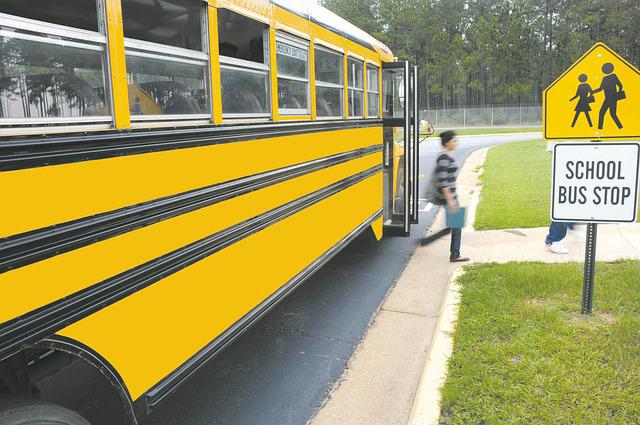Posted on
Many schools are preparing to reopen after being closed for COVID-19, and new guidelines are being implemented to prevent virus spread and maintain the health of staff and students. However, fire safety in schools must remain a top priority—and schools may need to take a fresh look at their emergency preparations.
 With other risks at top of mind, it may be tempting to put fire safety on the back burner. After all, thanks to our adherence to fire codes, fires in schools are rare, accounting for only 1% of all fire structures in the U.S. However, school fires can and do happen—from 2014 to 2018, fire departments responded to an average of 3,230 school fires each year (National Fire Protection Association, 2020). Don’t let your school become one of these. As you prepare to return to a “new normal,” take the time to review your school’s fire safety prevention measures and preparedness.
With other risks at top of mind, it may be tempting to put fire safety on the back burner. After all, thanks to our adherence to fire codes, fires in schools are rare, accounting for only 1% of all fire structures in the U.S. However, school fires can and do happen—from 2014 to 2018, fire departments responded to an average of 3,230 school fires each year (National Fire Protection Association, 2020). Don’t let your school become one of these. As you prepare to return to a “new normal,” take the time to review your school’s fire safety prevention measures and preparedness.
School Fire Safety Equipment
The best way to keep your staff and students safe is by having robust fire safety equipment in place, and keeping it regularly maintained. A sophisticated fire alarm system can detect smoke as well as heat, alerting you to a potential fire sooner at a time when every second counts. Modern fire safety systems (not only the traditional audible & visual appliances but many today can provide Mass Notification Functionality to help manage Critical Incidents) should also be equipped with both audible and visual alarms to provide better protection for students and staff with disabilities.
Your fire safety equipment works best when it works together—by integrating your fire alarm system with other building systems such as sprinkler, access control, and video cameras, you can maximize its potential and streamline your entire facility. And with 24/7 alarm monitoring, the building is protected even after hours, and help can be dispatched to you quickly, when needed.
Fire Drills
While safety equipment is crucial, it does not replace the need for regular fire drills. Remember that students who have been learning virtually will need a refresher on what to do during an alarm. Make it a priority to review the rules with students and ensure there is an up-to-date evacuation map posted in each classroom.
Teachers should have accurate, up-to-date rosters for their classroom. If your school is open on a hybrid schedule, ensure that rosters include details about which students attend on which days. Your building Access Control System can play a role in mustering students, faculty, staff, and visitors.
Your emergency evacuation plans may also require a review if changes have been made to the school as part of COVID-19 protocol. Do students need to be separated during drills to maintain social distancing? Have some doors been locked or barricaded to prevent use? If so, reach out to local authorities for guidance, and work with a qualified professional to ensure that you are still allowing for code-compliant egress.
Preventing Intentional Fires
Unfortunately, intentionally set fires account for almost half (43%) of all school fires, a fact which must be factored into prevention strategies. A security system with motion detectors can alert you of intruders, while strategically placed video cameras can discourage these acts, and capture clear footage should a security event occur.
Also consider the exterior of your facility—are there large, unkempt shrubs or trees where would-be arsonists could hide? Is the building entirely in shadow during the night? Keeping landscaping neat and well-lit can help deter crimes of opportunity.
Inspections Before Reopening
If your school, like many across the U.S., has been closed during the pandemic, there are special considerations for reopening the building. Foremost, your fire protection systems should be inspected, following the National Fire Protection Association (NFPA)’s Fire and Life Safety Checklist for Reopening a Building.
This is also a good time to have your heating and electrical systems professionally inspected. Heating equipment is responsible for 10% of all school fires, while electrical and mechanical failures or malfunctions also contribute to a substantial number of school fires.
Inspect the school at the classroom level as well, keeping a lookout for obvious fire hazards like large piles of paper, frayed extension cords, and overloaded outlets. If partitions have been added to classrooms or workspaces, check that these materials are compliant with NFPA flame spread ratings. A professional evaluation may be needed to ensure that that your smoke alarms and sprinkler systems will still work efficiently with these additions.
Finally, if teachers have rearranged student desks to allow for social distancing, ensure that doors and rescue windows are not blocked. Fire alarms that can be pulled in an emergency should also remain easily accessible.
If it’s time to upgrade your school’s fire or security systems, reach out to ISG. Our experienced consultants can help you select an alarm system that offers protection for the unique needs of your facility, and will identify the optimal placements for smoke detectors and surveillance cameras. We can also provide regular system inspections and maintenance to ensure continued operation at the highest performance levels.
